In my view cell punching is a very good way of raising queens. I have done it using "Stanley Cell Punches" for many years with great success and I have raised thousands of queens using them. Currently cell punches are not available commercially, so for those who don't have them, they have to be made. For a drawing of cell punches and a page on their use please use the button "Cell Punch Method" on the top left.
The content of this page is largely what was written by Dave Cushman as part of a wider subject. I felt it was confusing, so I split the original page to create this one with alternative methods of making equipment.
I have not used any of these, but Dave was trying to encourage other methods of punching cells containing larvae from brood combs. I think they will be too complicated for all but the reasonably practical person, but I encourage anyone to find a different method. If it works and suits you, then use it. Don't be discouraged by others. There are several "cell punches" shown on You Tube, but in May 2017, not one I could find was the "original" method. The problem is that beekeepers try one of those methods or on this page, find it very fiddly and assume that all cell punch methods are the same, when the "original" method in my opinion is far better. They may then give up queen rearing altogether. R.P.
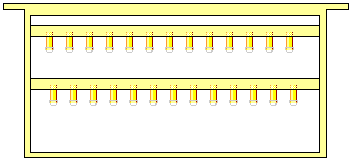
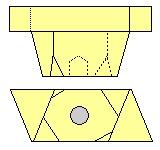
Whichever method is used, the sharpened end of the brass tube is inserted in a carrier of some sort (this may be a special frame or wooden block).
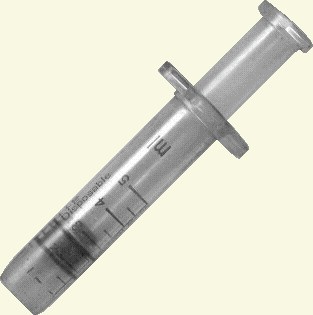
A simple but effective punch can be made from a disposable plastic syringe.
The front end of the barrel is cut off using, a fine hacksaw, and the edges of the tube are sharpened, to a knife edge, using a fine toothed file.
I have tried ml, 5 ml and 10 ml syringes... All of these work, they just produce different sized plugs of cells.
In use the plug is cut from the front of the comb, without the plunger fitted, the plunger is then inserted and used to push the plug out by air pressure.
Following requests and suggestions at lectures and demonstrations I have given, I have tried using a number of plastic items. The theory sounds good, but in practice I find the sharpened end blunts if you hit a wire. If you are very careful and you don't raise many queens then plastic is a reasonable alternative to metal. There is a device with a similar principle, called the "MJT" that is made out of stainless steel. I haven't used it, but I have read an article about it. It has the same problem in that the cell has to be mounted in something else. R.P.
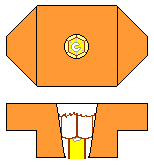
I use a wooden block similar to the plywood block on the Cell Plug Blocks page, that is intended to take the yellow Jenter plug. But I use one with a smaller tapered hole so that when the plug is pressed into it, all of the outer cells are damaged and folded inwards leaving one central one for the bees to produce a queen from.
The syringe punch illustrated produces a plug that is 12.5 mm in diameter which fits into a plywood block as shown left.

The tapered hole is bored using a 'carrot cutter', the same cutter is then used manually to ream out the wax debris that is left in the recess.
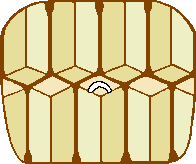
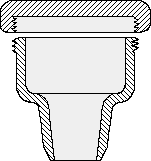
The Perret Maisonneuve cup, a cross section of which is illustrated (at a smaller scale), can be used with circular chunks of comb, similar to the illustration at right. The circular chunks are cut from the comb using a tinplate tube and are then trimmed with a scalpel. Which amounts to a cell punching method and so deserves mention here.
In fact the syringe punching method above, is merely a scaled down version of it.
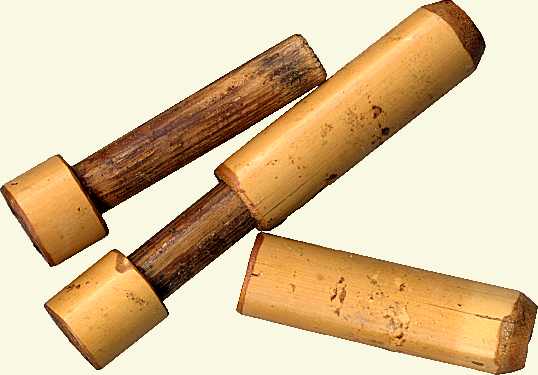
In November 2004, Brian Cramp showed me some parts from the system that was the forerunner of the Stanley punch, these items were made during the 1960s by Richard Smailes and are simply made using short portions cut from bamboo garden canes. I show these for interest rather than as a recommended modern method.

The drawing below is of a complete frame with two bars, at a scale of 1.5 pixels per mm, using image information from Richard's bars... If I were building a similar frame for using cell punches of any type, I would group them more centrally, because I have noticed that on bars of queencells (regardless of method of production) it is the end one or two positions that the failures generally occur in. Thus it saves royal jelly and pollen resources by leaving the end positions vacant. If extremely populous colonies are used that have access to large amounts of pollen, then the colony may possibly be able to service a larger number of queencells, but where quality is the aim rather than quantity I would only use 55% to 60% of the cell frame width.
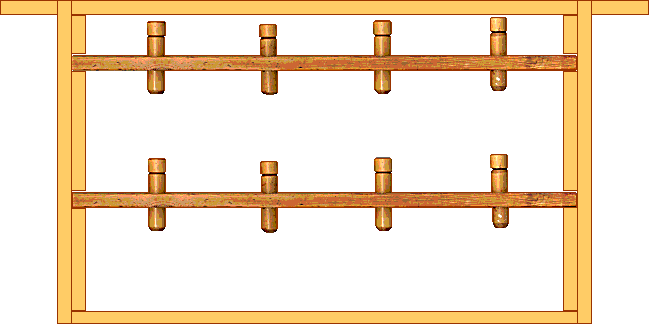
I have seen a number of attempts to punch cells using a short piece of tube, or a standard item such as a compression olive (ferrule) as used by plumbers, soldered to a piece of rod or nail. These may be fine for a few cells, but they require the cell to be fixed to something else, where with the standard punch the cell stays in the punch, making it much easier to use. R.P.
Originally written by Dave Cushman. Edited with additions in blue where indicated by Roger Patterson.